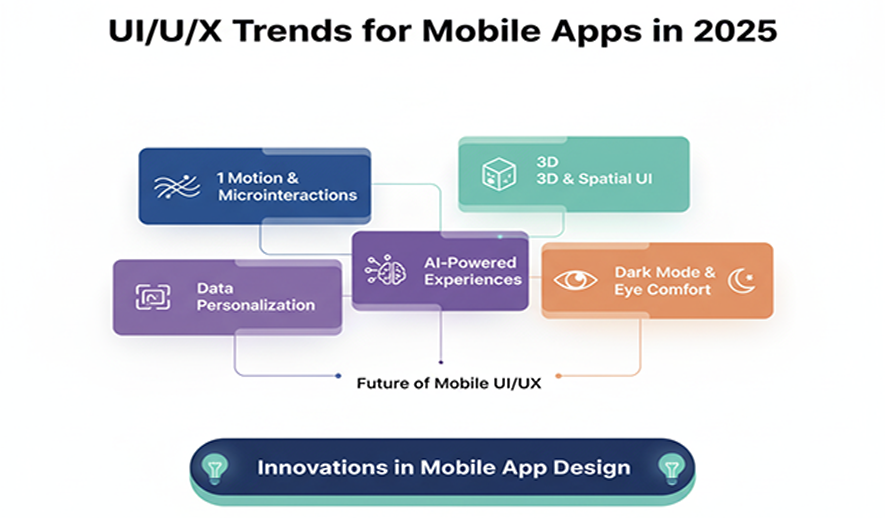
UI/UX Trends for Mobile Apps in 2025
Based on UI/UX design trends for 2025, mobile apps are evolving to be more intelligent, personalized, and immersive. AI and machine learning will drive dynamic, adaptive interfaces, while motion, 3D elements, and improved accessibility features will create more intuitive and engaging experiences for users.
Thematic design trends
- Adaptive and dynamic themes: While dark mode is now standard, 2025 takes it further with adaptive themes that automatically adjust based on time of day, ambient light, and user behavior.
- Neumorphism and transparency: Designers are moving towards a refined "morphism" style, blending soft, almost-3D elements with the translucence of "glassmorphism" to add depth without clutter. This approach creates a clean, elegant, and modern interface.
- Minimalism with a bold twist: The "less is more" philosophy continues, but it's now paired with strong, expressive typography and strategic bursts of color to create an impactful visual hierarchy.
- Bento grids: These flexible, modular layouts are gaining popularity to display diverse content in a clean, organized, and easily scannable way.
Interactive and immersive elements
- Purposeful motion and micro-interactions: Subtle, well-timed animations and micro-interactions will be used to provide instant feedback and improve usability, rather than simply for aesthetics.
- Immersive 3D and AR experiences: More powerful mobile hardware enables richer 3D graphics and animations, moving beyond gaming into e-commerce, education, and other apps for product visualization and interactive tutorials.
- Gesture-based navigation: Apps are moving away from traditional buttons in favor of more natural and intuitive swipe, tap, and pinch gestures.
- Multi-modal interactions: As voice-activated assistants become more sophisticated, apps will integrate voice commands and potentially other inputs like eye-tracking, making them more versatile and accessible.
Functionality and intelligence
- Hyper-personalization with AI: AI and machine learning will enable deeply personalized user experiences by analyzing user behavior to provide tailored content recommendations, dynamic UI adjustments, and proactive support.
- Passwordless authentication: Biometrics (facial and fingerprint recognition), passkeys, and single sign-on (SSO) are becoming standard to create a more secure and
- Privacy-centric UX: With increased data awareness, app designs will prioritize transparency with clearer permission requests and intuitive privacy settings to build user trust.
- Offline-first experiences: Designing for reliable offline use and caching is becoming more common to ensure seamless productivity and user access in areas with poor connectivity.
Ethical and sustainable design
- Sustainable UX: Designers are increasingly focused on reducing the environmental footprint of digital products. This includes designing for better battery efficiency, smaller app sizes, and reduced, purposeful animations.
- Inclusive and accessible design: Accessibility will be a fundamental design principle, not an afterthought. Apps will incorporate features like screen reader compatibility, adjustable text sizes, and high-contrast color schemes to ensure they can be used by people of all abilities.
- Ethical AI: As AI integration grows, designers must address concerns around algorithmic bias, data privacy, and transparency to ensure AI-driven features are fair and trustworthy.
